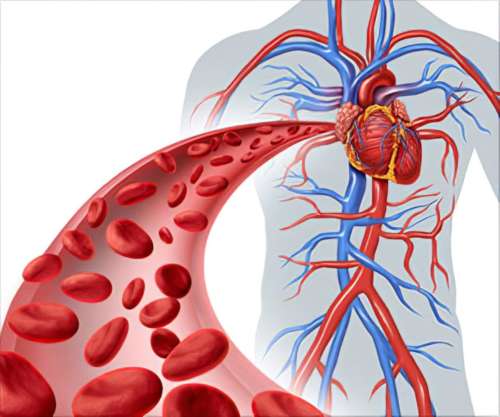
The circulatory system, also called the cardiovascular system, consists of the heart and the blood vessels that run throughout the body. It delivers nutrients and oxygen to all cells of the body. The oxygen we breathe gets mixed into the blood in the lungs and the heart pumps this blood to all parts of the body. Each heartbeat is a contraction of the heart as it pumps blood around the body. The heart has four chambers: the left atrium, right atrium, right ventricle and left ventricle. They are all separated by one-way valves, meaning the blood can only flow in one direction. Blood is carried to the heart in the veins and back out to the rest of the body in the arteries.
If any part of the circulatory system isn’t functioning, the body will begin sending signals. For instance, do your hands and feet ever get noticeably colder than the rest of your body? Do you wake up before your extremities do? Do you get pins and needles if you sit for too long? All of these are signals that there is a problem with your circulatory system.
In East Asian Medicine, we take poor circulation seriously. If left unchecked, it can lead to many of the disorders associated with aging such as hypertension, hardening of the arteries, painful joints and varicose veins. Even mild circulatory problems mean that less oxygen is getting to your tissue and that your body is less efficient when it comes to moving waste products. So now’s the time to get your blood moving by adopting some of these habits.
Hydrotherapy – This may sound like the kind of treatment that costs a fortune at a fancy spa, but the good news is you can give yourself a hydrotherapy treatment at home in your shower. All you have to do is alternate between hot and cold water 5 or 6 times. When you stand under hot water, blood rushes to your skin, oxygenating tissue as it flows. When you switch to cold water, the blood diverts back to your internal organs, taking waste products with it. And you don’t need to be too extreme with the temperatures to get blood moving and feel an energy boost.
Massage – Not only is massage a great way to relax, but the pushing, kneading and pulling on the tissues helps increase circulation. When a massage therapist presses down, they move blood in the congested areas, and when they release pressure, new blood flows in to replenish this. By squeezing and kneading the tissues, the massage therapist helps release lactic acid and improves the circulation of lymph.
Stretching or Exercising – Slow stretching can improve circulation by lengthening and oxygenating muscles. Yoga or tai chi are ideal exercises to promote healthy circulation. And you can stretch anytime and anywhere. So get up from your desk and bend back as far as is comfortable. Then reach forward and touch your toes. Twist your torso left and right and bend from side to side. Don’t worry about having great technique, just stretch as far as it is comfortable.
Exercising is the other half of this practice. Any exercise that gets your heart pumping will make the blood circulate. So consider going for a run, riding a bike, swimming, taking up a team sport, joining the gym or picking up a racket. Even committing to walk for just 30 minutes a day can help.
Eating Right – Some foods are known to promote circulation. Lycopene is an antioxidant that has been shown to help with blood circulation. You can find it in red foods such as watermelon and tomatoes. Garlic and onions are natural blood thinners and can help get blood moving. In East Asian Medicine, leafy green vegetables are said to move qi because of their beneficial effect on the liver. Cayenne and ginger are both warming and increase blood flow. Turmeric is a powerful anti-inflammatory, anti-oxidant and a natural blood thinner. Your circulation also benefits when you eat foods rich in omega 3 fatty acids such as salmon, nuts and seeds. And lastly, don’t forget to drink plenty of water. People who are chronically dehydrated can suffer circulatory problems.
Acupuncture and Herbs – Acupuncture can be helpful to increase local blood circulation because it raises levels of nitric oxide around the area that the needles are entered, thus enhancing peripheral blood flow. Not only does it help with blood flow, it can help with disorders such as Raynaud’s, high blood pressure, and hypertension. Herbal formulas can also be utilized to improve circulation in conjunction with acupuncture treatments. And the nice thing about herbal formulas is that there are almost no side effects and they can be safely taken long term.
If you are dealing with circulatory issues, consider incorporating one or all of these remedies into your daily life. Your body will thank you in the long run.

